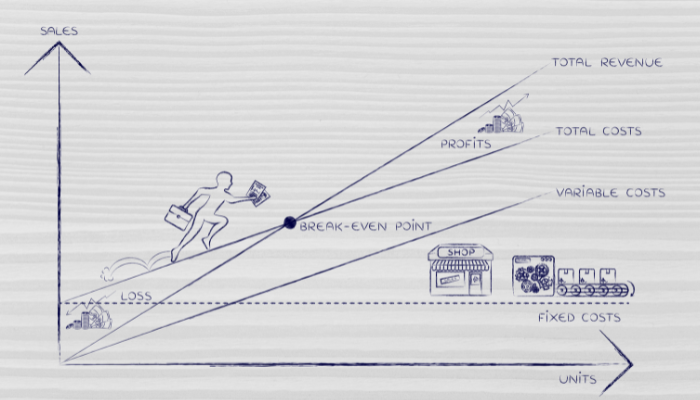Understanding the break-even point for your salon is more than just crunching numbers; it’s a crucial part of running a successful business. Think of it as your financial roadmap, steering you toward smart decisions that keep your salon thriving. By determining your break-even point, you can identify the sales volume required to cover both fixed and variable expenses. Essentially, it’s the magic number that lays the groundwork for your profitability.
Imagine setting realistic sales goals with confidence when introducing new treatments or products. When you have a clear grasp of your break-even point, you’re not relying on guesswork; instead, you’re equipped with valuable insights that enhance your business planning. This understanding enables you to develop pricing strategies that cover costs while also laying out the groundwork for long-term success.
So why is this knowledge so crucial? First off, it tells you the minimum number of services you need to perform each month to keep your salon afloat—think rent, staff wages, supplies, and commissions. Knowing your break-even point helps you establish the right prices, ensuring you not only survive but also build a healthy profit margin. If your break-even point feels too high, it may be time to reconsider your pricing or explore ways to reduce costs.
But there’s more! Understanding your break-even point is essential for effective budgeting. It helps you plan for the future, forecast income, and strategize for both busy and slow periods. With this insight, you can tailor your marketing efforts to maximize sales when it counts the most.
Let’s not forget about the importance of benchmarks. By using your break-even analysis, you can set performance targets for your salon. If you notice that you’re falling below that critical threshold, it’s a clear sign to reevaluate your strategies and make some adjustments.
So, view your break-even point as not just a financial figure, but as your secret weapon for achieving salon success!
Here’s a simplified way to calculate your break-even point:
- Identify Fixed Costs: Start by listing all your fixed expenses—these are costs that stay the same no matter how many services you provide. For a salon, this might include rent, staff salaries, utilities, insurance, and marketing.
- Identify Variable Costs: Next, outline your variable costs, which can change based on how many services you deliver. These include the cost of hair color, styling products, and commissions for staff.
- Determine Average Revenue per Service: Calculate how much money you make on average from each service. You can do this by dividing your total income from services by the number of services you’ve provided over a specific timeframe.
- Use the Break-Even Point Formula:
Break-Even Point (in units) = Fixed Costs / Sales Price Per Unit – Variable Costs Per Unit).
If you prefer looking at it in terms of dollars:
Break-Even Point (in sales dollars) = Fixed Costs / Contribution Margin*
*The contribution margin is determined by subtracting the variable costs of a service or item from its selling price. For example, if you sell a service for $150 and the associated costs for supplies and labor amount to $50, the contribution margin would be $100. This $100 is used to cover fixed costs, and any leftover amount contributes to your net profit.
- Analyze and Adjust: After calculating your break-even point, review the results carefully. This number indicates how many services you need to provide in a month to cover all your costs. If your break-even point is higher than expected, consider adjusting your prices, cutting back on expenses, or enhancing your marketing to drive more sales.
- Monitor Regularly: Develop a habit of regularly reviewing and adjusting your break-even calculations, especially when your costs or pricing change.
Remember, the break-even point is specific to your salon—the ideal number varies based on your unique fixed and variable costs and how you set your prices. It’s all about finding that balance where your sales cover your expenses, so you can focus on what truly matters: making your salon a success!


